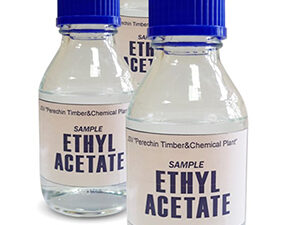Description
Dimethylformamide (DMF): The Versatile Solvent with Important Considerations
Dimethylformamide (DMF), often abbreviated as DMF, is a clear, colorless liquid with a faint, characteristic odor. It’s a widely used organic solvent, prized for its exceptional solvating power and versatility in various chemical applications. While DMF offers significant advantages, it also comes with important safety and environmental considerations that require careful handling and management.
What Makes DMF So Useful?
DMF belongs to the class of polar aprotic solvents. This unique classification defines its ability to effectively dissolve a wide range of substances, including both polar and non-polar compounds. This broad solvency stems from its molecular structure, which features a polar amide group (C=O) and two methyl groups attached to the nitrogen atom.
Here’s a breakdown of its key properties contributing to its widespread utility:
- High Solvency: Dissolves a vast array of organic polymers, resins, dyes, and even some inorganic salts.
- High Boiling Point: Its relatively high boiling point (153°C) allows for reactions to be carried out at elevated temperatures without significant solvent loss.
- Miscibility with Water: Being miscible with water in all proportions expands its applicability in aqueous-based reaction systems.
- Chemical Stability: Generally stable under a wide range of reaction conditions, making it suitable for diverse chemical transformations.
Applications Across Industries:
These properties make DMF an indispensable tool across a wide range of industries:
- Chemical Synthesis: Used as a solvent in the synthesis of pharmaceuticals, agrochemicals, and fine chemicals. It facilitates various reactions, including nucleophilic substitutions, condensations, and Wittig reactions.
- Polymer Chemistry: Employed in the production of polymers, particularly for dissolving and processing polyvinyl chloride (PVC), polyurethanes, and various other specialty polymers.
- Textile Industry: Used as a solvent for dyes and in the finishing of textiles.
- Electronics Industry: Utilized as a solvent in the manufacture of semiconductors and integrated circuits.
- Petrochemical Industry: Used as an extraction solvent for purifying petroleum products.
- Research and Development: A common solvent in research laboratories for various experiments and analytical techniques, such as spectroscopy and chromatography.
Safety and Environmental Considerations:
Despite its versatility, DMF is not without its drawbacks. It’s crucial to be aware of and address its potential hazards:
- Toxicity: Inhalation, skin absorption, or ingestion of DMF can lead to various health problems. It is classified as a reproductive and developmental toxin, and long-term exposure can cause liver damage.
- Flammability: DMF is a flammable liquid and can form explosive mixtures with air at elevated temperatures.
- Environmental Concerns: DMF can contaminate soil and water, and its persistence in the environment is a concern.
Proper Handling and Mitigation Strategies:
Given these concerns, the use of DMF necessitates strict adherence to safety protocols:
- Engineering Controls: Implementing adequate ventilation, fume hoods, and closed systems to minimize exposure levels.
- Personal Protective Equipment (PPE): Mandatory use of gloves, eye protection, and respirators when handling DMF.
- Safe Storage and Disposal: Storing DMF in well-ventilated areas away from heat and open flames. Proper disposal through licensed waste management facilities is essential.
- Substitution: Exploring alternative solvents with similar properties but lower toxicity and environmental impact whenever feasible. Examples include dimethyl sulfoxide (DMSO), N-methyl-2-pyrrolidone (NMP), and dihydrolevoglucosenone (Cyrene).
The Future of DMF:
While DMF remains a valuable solvent in many applications, increasing awareness of its hazards has led to growing efforts to minimize its use and find safer alternatives. Researchers are actively exploring and developing more sustainable and environmentally friendly solvent options.
In Conclusion:
Dimethylformamide (DMF) is a powerful and versatile solvent with a wide range of applications across diverse industries. However, its toxicity and environmental impact warrant careful handling and responsible use. By implementing appropriate safety measures, exploring alternative solvents, and continuously striving for more sustainable practices, we can minimize the risks associated with DMF while still benefiting from its unique properties. The future likely holds a shift towards safer alternatives, but for now, responsible management of DMF is paramount.














Reviews
There are no reviews yet.